Ethiopia Special
The student at dawn
A huge country, small budgets, and a fast growing population – despite many hurdles, Ethiopia is well on its way to improve its health care system. A national project breaks new ground with regards to digital teaching support in medicine.
Napoleon Tesfaye sits at a small table and studies. Every morning, he folds his bed against the wall to make room for the table in his tiny room. The 21-year-old shone in his high school graduation and got one of the coveted medical school places. He was the very first in his family to make it to university in faraway Addis Ababa, Ethiopia’s booming capital.
Why did Napoleon choose medicine? “In Ethiopia, there are so many people who are poor and have little access to medical care. Especially out in the countryside. I want to help change that.” And clearly, he will also benefit personally from his career choice later, even twice: “Doctors are very respected in our country and earn good money.”
Napoleon is now a second-year student. But COVID-19 hit hard. From March 2020 to February 2021, all students had to go into a hard lockdown. So he drove the three hours from Addis Ababa, over meandering roads through the Ethiopian highlands back home to the outskirts of Ambo. Here in the “Pan-Africa” neighbourhood stands his parents’ small house. Here, his tiny room became a substitute for the college auditorium for a year.
A challenge, in many respects. His mother, a housewife, and his father, a tailor, regularly woke “their medical student” up at around 4 a.m. so he could complete his daily workload. Napoleon laughs about this: “My parents are still incredibly excited and proud that I’m studying.”
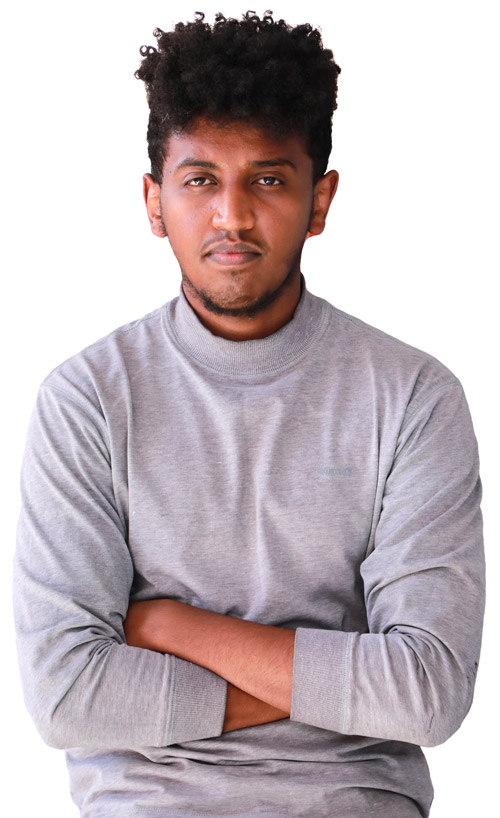
On the way to Ethiopia
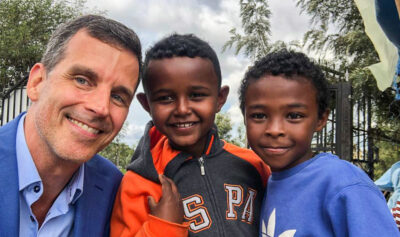
Stefan Wisbauer and Napoleon Tesfaye have never met – at least, not directly. Wisbauer is the CEO of Lecturio Inc., based in Leipzig, Germany. In mid 2019, he flew to Lagos, West Africa for a health education conference and made a stopover in Addis Ababa, thanks to the introduction to the health minister there via Dr. Gerd Birkenmeier who had helped build the Gondar Medical School in the 1980s as part of a collaboration with the then-Karl Marx University in Leipzig.
“Thanks to the connection to the Health Minister, I was able to sit down with ten directors and senior advisors from the Ministry of Health in Addis Ababa, where we discussed digital solutions to the problems facing the Ethiopian medical education system,” recalls Wisbauer.
It was not the forced digitization push by the COVID-19 pandemic, which came later in 2019, but rather the Ethiopian government’s desire to move its country forward. One figure clearly illustrates the difficult situation in Ethiopia: There is only one doctor for every 10,000 inhabitants. In comparison, Germany has about 40. The rural areas of Ethiopia in particular are underserved. The child and maternal mortality rates are impacted by this shortage, as are those of malaria and tuberculosis.
For this reason, Ethiopia has expanded its health care system more than almost any other African country over the last 15 years. Massive investments were made in new and established medical faculties, as well as in the development of rural health care. Ethiopia’s system of health extension workers, which has its roots in the 1970s and has experienced many ups and downs since then, is now considered a model for many African countries. Today, there is a health post in the vast majority of Ethiopia’s 17,000 village communities. There, community members with basic training take on disease prevention tasks; educate people about contraception, nutrition, circumcision and hygiene; and also vaccinate people, something that is reserved for trained medical personnel in other countries.
Tuberculosis death rate
(per 100,000 people)
Source: Worldbank | tradingeconomics.com as of Apr. 23 2021
The results are impressive: While in 2009, 87 out of every 1,000 children in Ethiopia died before their fifth birthday, today that figure is down to 50. Significant successes have also been achieved in the fight against HIV, polio, tetanus, measles and tuberculosis. Access to medicine, drinking water, vaccination programs, and malaria protection has been improved. Today, almost every Ethiopian can reach a local health clinic within a two-hour walk. An affordable health insurance system is also under development.
Herculean tasks of the Ministry of Health
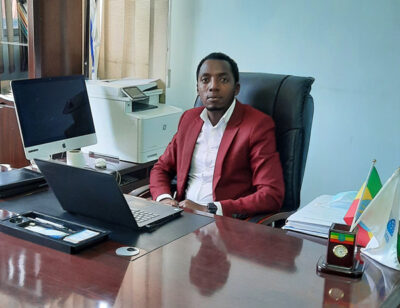
The Ethiopian Ministry of Health is located in the center of Addis Ababa, on the lively corner of Sudan Street and Tesema Aba Kemaw Street. This is where Assegid Samuel, Director of Human Resources for Health, works. The sporty health manager is entrusted with a number of herculean tasks. “My directorate plans human resource developments in the health sector for years to come,” Samuel says. “Also, where staff will be deployed geographically.” One of the main goals is to further reduce the inequalities in health care between Ethiopian regions and between urban and rural areas.
However, the budget for this is conceivably tight. In 2020, Samuel’s Ministry of Health had only $US 505 million available, Reuters reports. Admittedly, this is Ethiopia’s fourth-largest budget item, after education, road construction, and debt repayment. But improving the difficult health situation in a country with 111 million inhabitants with this sum seems impossible. In Western Europe, the annual budget of the Ethiopian Ministry of Health is used to build just two passable hospitals.
What the Lecturio studios produce
Assegid Samuel and his colleagues from the Ethiopian Ministry of Health followed Stefan Wisbauer’s presentation attentively. What Lecturio CEO Wisbauer presented there seemed extremely useful for Ethiopia’s situation: Lecturio offers the complete medical and nursing curricula, online. “And not as a second-best option, but unique in scope and presentation worldwide.”
Since 2015, world-class lecturers have flown to Leipzig year after year and produced elaborately designed learning videos in the Lecturio studios. This has resulted in more than 8,000 videos covering global medical fields from anatomy, to pharmacology, to surgery, taught by a team of university lecturers from renowned universities including Harvard, Johns Hopkins, Imperial College, University College London and Yale, to mention a few. In addition, the learning platform is interactive, integrating 3D models of all body parts, students can access thousands of exam questions.
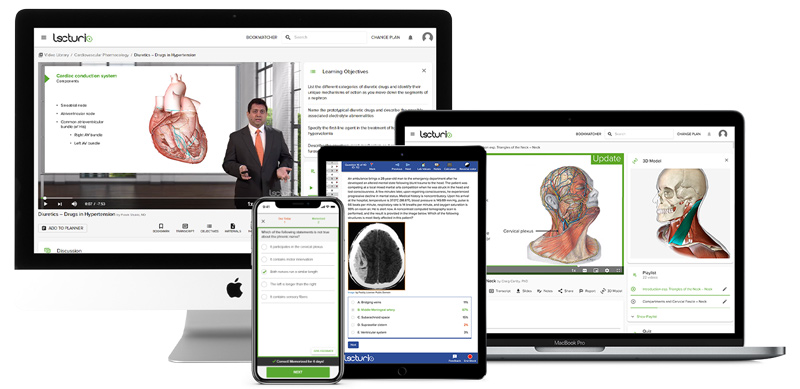
Educators can also track their students’ learning progress and utilize a secure online exam system. “And one more aspect is certainly particularly important in the Ethiopian context,” Wisbauer explained: “The learning apps also work offline. Anyone who has downloaded the content beforehand can use them, even in rural areas without Internet connections.”
Intensive discussions in Addis Ababa
After the initial discussions between Assegid Samuel’s team and Stefan Wisbauer, it only took a few days before a joint plan was in place. Samuel’s department is jointly responsible for the education and training of all state health personnel in Ethiopia – for the university training of doctors as well as for the employees of the health posts in the 17,000 village communities. “Digitization offers enormous opportunities for us,” Samuel says. “With digital training programs, we can reach even the most remote parts of the country, and staff no longer have to travel for days to attend workshops. Doctors and aid workers are desperately needed there every day.” Depending on the time of year and road conditions, just getting to Addis Ababa can take days. Ethiopia is four and a half times the size of Great Britain.
Digital training could enable tens of thousands of students, medical personnel, and community workers to participate in high-quality training programs, Samuel says. Costs for instructors, travel, accommodation, and food would be reduced enormously. Although education and training would continue to take place in small seminar groups on site, digital offerings are expected to bring about a major leap in quality and quantity.
After intensive discussions, an agreement was reached. Twenty-one direct enrollment state medical faculties in Ethiopia will be equipped with a dedicated digital medical study platform and apps provided by Lecturio, including education videos for nurses and medical technicians, as well as the production of video tutorials for technical assistants.
Ethiopian med schools participating in the project
- Addis Abeba University
- Adigrat University
- Ambo University
- Arba Minch University
- Arsi University
- Bahir Dar University
- Debre Berhan University
- Debre Markos University
- Debre Tabor University
- Ethiopian Defence University
- Gondar University
- Haramaya University
- Hawassa University
- Jigjiga University
- Jimma University
- Mekelle University
- Mizan Tepi University
- St. Paul HMMC
- Wachamo University
- Wolkite University
- Wollega University
A public-private partnership alliance was forged to make the project financially feasible. Because of the obvious potential of this large-scale capacity building project, the German Federal Ministry for Economic Cooperation and Development (BMZ) and the German Society for International Cooperation (GIZ) got on board. A project working systematically with universities across a large country such as Ethiopia was new and required some convincing, especially with a goal to support 9,300 students online.
“The uptake of the project was fast and encouraging, in spite of its launch in the middle of the COVID-19 pandemic and a number of domestic disruptions,” says Naomi Nathan, medical doctor and Lecturio Project Manager for the Ethiopia Project. “Within a few months thousands of students and teachers were using the platform.”
Change Management at St. Pauls Medical School
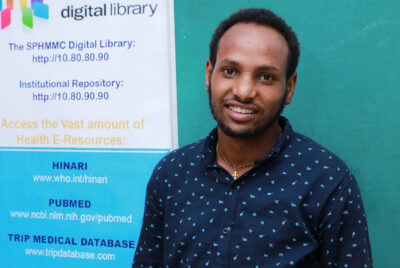
Biruh Alemnew knows that continuous project work is necessary for success. He works half an hour’s drive from the Ethiopian Ministry of Health at St. Paul’s Hospital Millennium Medical School. St. Paul’s is a hospital rich in tradition, founded in 1968, still by Emperor Haile Selassie. Each day, it treats an average of 1,200 emergency and outpatients. In 2010, the affiliated St. Paul’s Medical College opened, where Alemnew is a lecturer and the lead person at the “Health Science Education Development Centre.”
Alemnew is a change management professional for digitization, and his repertoire of experience is correspondingly broad. In this case, that’s a huge asset: the Medical School of St. Paul’s alone has 2,000 employees. “We were thrilled when the ministry provided us with Lecturio,” he says. “But digitization is a big challenge. It is a cultural change. We are lucky that St. Paul’s management recognized that early on and had established our development center for these processes.”
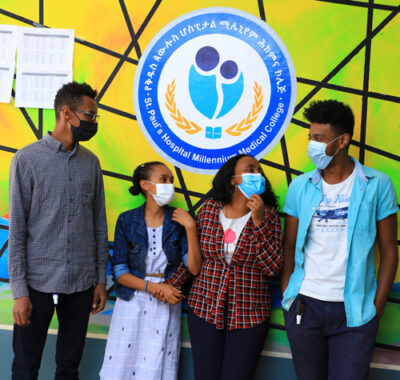
It is not only older professors who have had difficulties making the switch to digital. Doctors and lecturers are usually extremely busy, and it’s not always easy to find the time or mood to integrate innovations into daily routines. However, at St. Paul’s, that was never left to the individual attitudes of faculty members. Alemnew’s center has been training St. Paul’s faculty for a year and a half on digitization issues, for example, how to create online teaching content for Moodle.
“To integrate Lecturio into our operations, we first had orientation and training seminars for the directors of each department and then with their staff. We also tracked who didn’t show up,” Alemnew said, laughing. “We uploaded all of our students earlier and set up support via email and phone because our students were at home due to COVID-19. Many of them immediately understood the benefits of Lecturio and started using it. Lecturio is a very user-friendly platform.” Among other things, teachers can use the thousands of illustrations, presentations, 3D models, and videos to make their seminars and lectures much more varied and effective, assign students learning materials, and also monitor their learning progress. The COVID-19 pandemic has brought about a great surge in awareness in this regard too.
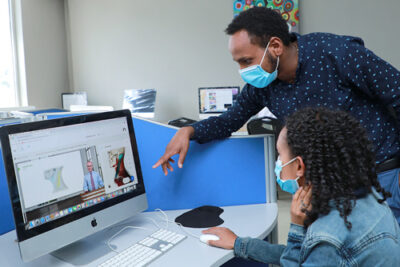
And what hurdles does Biruh Alemnew see? “Infrastructure has a big impact,” he explained. “True, every student now has a smartphone or tablet, and there are also 200 computers in our computer lab. But the Internet is expensive in Ethiopia and not available everywhere.” St. Paul’s therefore provides free Wi-Fi access to its students on campus. But unfortunately, that doesn’t help when you’re sitting in COVID-19 lockdown far away somewhere in the countryside.
Back on campus
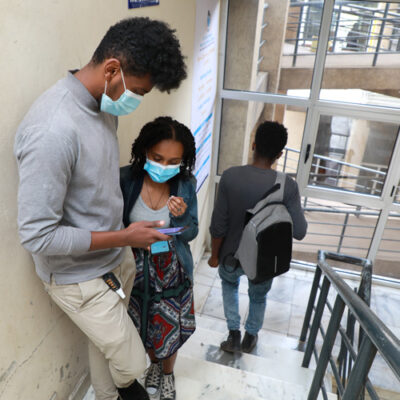
How did Napoleon Tesfaye manage that in his small room far from Addis Ababa? His father bought him unlimited Wi-Fi access every month, which cost him 500 Birr, or about 10 euros. A lot of money for his parents and in Ethiopia, where the average monthly salary is 65 euros and times are difficult. Napoleon says most of his fellow students have access at home, but some can’t afford it. They try to organize it somehow – at Internet hotspots, cafés, or libraries.
Napoleon, meanwhile, has been back on campus here at St. Paul’s for a couple of weeks. The lockdown is finally over. He passed the first exams with flying colors and is already studying for the next round with his fellow student Ruhama Aschalew. They watch videos together and go through exam questions online. “I don’t really know what to say,” Napoleon says. “I’ve spent a year now learning anatomy from Dr. Canby, about the immune system from Dr. Delves, and from so many other great teachers. What the videos accomplish, no book can. Even though I may never meet my teachers in person, I want to give them my warmest regards. What they are doing is great. It makes me feel part of a world family.” by Lutz Mükke ![]()
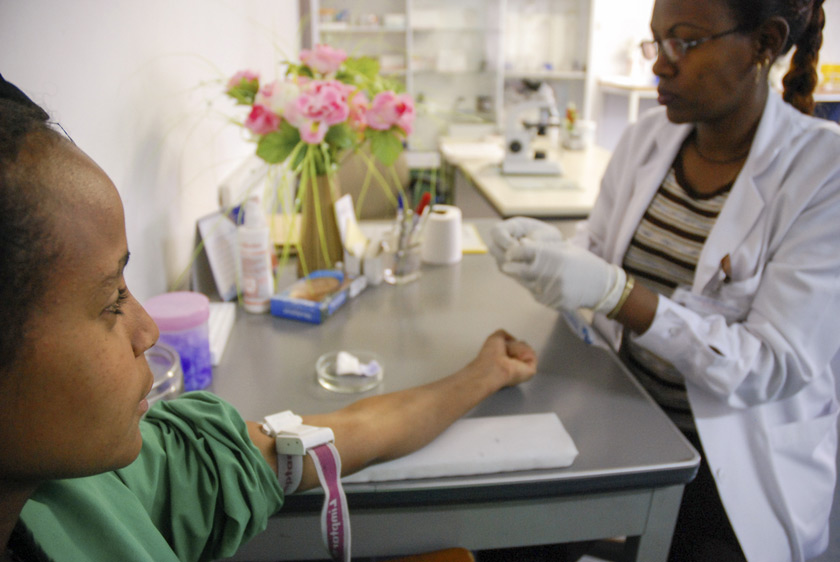
Ethiopia is one of the cradles of humanity and looks back on about 3,000 years of history.
Ethiopia has established a health care system based on primary health centers, clinics, and hospitals.
an Interview with Dr. Gebrewold
Share this page:
Start Your Journey with Lecturio
Interested to learn how we can support your goals at the individual or institutional level?
Schedule a
tailored demo
Let our experts show you our learning platform.
Get a quote for
your institution
Tell us more about your use case and receive a quote.
Have a question?
Our team has an answer!
Email us any questions you would like us to address.


